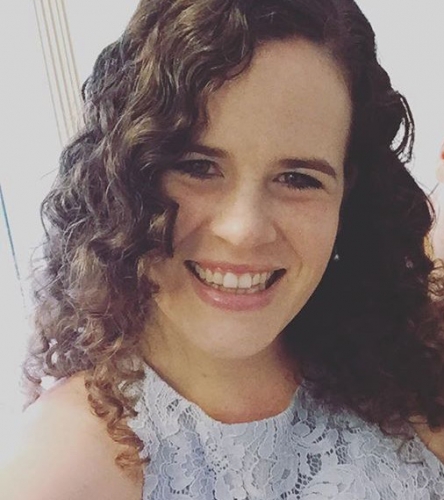Ethical dilemmas are part and parcel of working in healthcare. Whether it’s gaining consent from patients with different cultural beliefs or making tough calls under pressure, healthcare workers often face situations where there’s no easy answer. For students just starting out, these moments can feel overwhelming…especially when the theory they’ve learned doesn’t quite match what they see in real-life settings. That’s why it’s so important to teach ethics early and often in healthcare education. Australian educators play a key role in helping students learn to recognise tricky situations, think them through, and make decisions they can stand by. We look at how educators can support students to develop strong ethical thinking skills using real examples, practical strategies, and the core values that guide healthcare in Australia.
Ethical dilemmas are often emotionally charged and lack clear-cut solutions, especially for students still developing clinical confidence. Common ones include:
Subscribe for FREE to the HealthTimes magazine
-
Balancing patient autonomy with duty of care: For example, when a mentally competent patient refuses life-saving treatment.
-
Confidentiality versus mandatory reporting: Such as disclosing sensitive information when child protection concerns arise.
-
Resource allocation: Making decisions about prioritising care in overstretched public health settings.
-
Cultural considerations: Navigating differing cultural values.
Students need to be able to recognise these ethical dilemmas and then apply professional frameworks when addressing them. Australian healthcare practitioners are guided by codes such as the
Nursing and Midwifery Board of Australia (NMBA) Code of Conduct, the
Australian Medical Association (AMA) Code of Ethics, and
AHPRA’s Good Medical Practice guidelines’.
Four foundational principles underpin decision-making across clinical disciplines: autonomy, beneficence, non-maleficence and justice.
-
Autonomy refers to respecting a patient’s right to make informed decisions about their own care, even when those decisions may differ from what a practitioner believes is best. Educators must help students understand informed consent and voluntary decision-making, particularly in cases involving minors or vulnerable populations.
-
Beneficence involves acting in the best interest of the patient. For students, this principle can raise questions when clinical decisions may result in discomfort or short-term harm (e.g. painful procedures) in pursuit of long-term benefit.
-
Non-maleficence, or “do no harm,” guides students to consider the potential risks of treatment. It requires critical thinking around side effects, unintended consequences, and when withholding treatment may be ethically appropriate.
-
Justice concerns fairness in the distribution of healthcare resources and equal treatment of all patients. In Australia, this principle extends to ensuring culturally safe care for Aboriginal and Torres Strait Islander peoples, rural and remote communities, and marginalised groups.
Helping students build ethical reasoning skills requires more than textbook theory. Experiential and interactive teaching strategies are helping to equip students with the tools to navigate ethical dilemmas with confidence and professionalism:
-
Case-Based Learning and Simulated Scenarios: Using real or hypothetical case studies from Australian clinical settings allows students to explore complex ethical issues in a controlled environment. Simulations with standardised patients, role-play, or virtual reality can replicate ethical tension, such as breaking bad news or handling a non-consenting patient, giving students the chance to practise navigating grey areas while receiving feedback in real time.
-
Ethics Tutorials and Group Discussions: Structured classroom discussions encourage students to share their moral reasoning and consider different viewpoints. These sessions are most effective when guided by a skilled facilitator who can challenge assumptions, highlight bias and connect student responses to established ethical frameworks like the NMBA or AMA codes.
-
Reflective Practice and Journalling: After placements, these practices can help students process moments of ethical discomfort, build moral resilience, and recognise growth in their decision-making capacity.
-
Interprofessional Learning: Ethical dilemmas often involve collaboration between different healthcare roles. Interprofessional workshops or ethics panels, where nursing, medical and allied health students share perspectives, mirror the team-based nature of healthcare and broaden students' understanding of how ethical decisions are negotiated across disciplines.
Ethical decision-making is deeply personal. When students feel respected and supported, they’re more likely to engage openly with complex ethical issues and more equipped to grow from those experiences.
Educators should actively promote discussion without judgment, where students feel comfortable asking questions, expressing uncertainty, or admitting mistakes. Normalising ambiguity and disagreement helps students build confidence in ethical reasoning, especially when faced with dilemmas that lack a single 'correct' answer.
Ethical situations can also evoke strong emotions, especially during placements involving end-of-life care, patient suffering, or moral distress. By acknowledging these emotional reactions as valid and expected, educators can help students process them constructively rather than internalising guilt or discomfort.
While students should be encouraged to stretch their ethical thinking, this should be paired with reassurance and guidance. Structured debriefing, mentoring relationships, and peer support.
As healthcare continues to evolve, so too do the ethical challenges faced by students and professionals alike. Preparing students for the future means not only teaching established principles but also equipping them to navigate emerging ethical dilemmas.
The rapid expansion of telehealth and electronic health records has introduced new ethical questions around privacy, informed consent, and equity of access, particularly in rural and remote communities. Students must understand how to protect patient confidentiality in virtual settings.
Teaching healthcare students to navigate ethical dilemmas is a responsibility that extends beyond imparting knowledge. It involves cultivating moral courage, critical thinking, and a commitment to patient-centred care. Through case-based learning, reflective practice, and strong mentorship, educators can create a supportive environment where students are empowered to explore the grey areas of healthcare with confidence and compassion.













